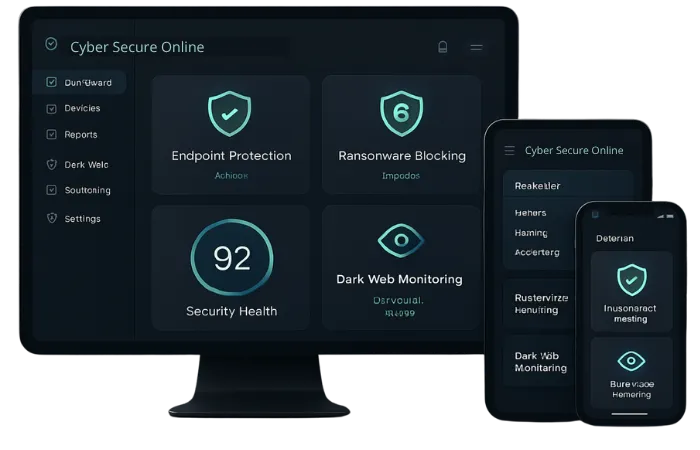1-888-988-5567
FACTS
Top 3 Cyber Threats & How to Stay Safe
Top 3 Threats This Month
Empower your organization with essential knowledge to navigate the complexities of
cybersecurity and ensure robust protection against digital threats.
1. Phishing Scams
What’s happening?
Cybercriminals are sending emails and texts posing as trusted brands (like Microsoft, bank contacts, or delivery companies), trying to trick users into clicking fake links or sharing login details.
How to protect yourself:
¤ Double-check the sender’s address and look for odd spelling/grammar.
¤ Never enter passwords through links in emails—go to websites directly.
¤ Train your team to spot suspicious messages.
2. Ransomware Attacks
What’s happening?
Ransomware is malware that locks your files or systems, demanding payment to unlock them. Attackers often target small businesses, sometimes through infected attachments or software bugs.
How to protect yourself:
¤ Back up all important data regularly.
¤ Never open attachments from unknown senders.
¤ Keep your software up to date to block known vulnerabilities.
3. Business Email Compromise (BEC)
What’s happening?
Attackers impersonate a company executive or vendor, asking employees to change payment details or share sensitive information.
How to protect yourself:
¤ Always verify payment changes or sensitive requests by phone or in person.
¤ Use multi-factor authentication (MFA) on email accounts.
¤ Limit who can authorize payments or access finance systems.
Cybersecurity Q&A
Share this page with your team: Awareness is your strongest defense.
What is phishing and why is it dangerous?
Phishing attempts to steal your passwords, data, or money by imitating trusted contacts. It’s dangerous because even one “successful” click can expose your business to major losses. Using strong email filters and staff training greatly reduces the risk.
How does malware get on my computer or network?
Malware spreads through infected attachments, drive-by website downloads, bad software updates, or USB devices. Protect your business by updating software, blocking suspicious attachments, and avoiding unknown downloads.
What should I do if a breach is suspected?
Quickly disconnect affected systems from the internet, alert your cybersecurity provider, and do not pay ransoms. Document what happened and work with professionals (like Cyber Secure Online) to recover quickly and report the incident if required.
How often do I need to update my security?
Always install updates for Windows, Mac, browsers, antivirus, and business apps as soon as possible. Cyber Secure Online handles this with automated updates and 24/7 monitoring.
Book Your Free Consult & Assessment
Start your security journey with a real conversation—no forms, no sales scripts.
When you reach out, a cybersecurity expert will work with you to truly understand your business or personal security needs.
We listen first and answer your questions, making sure Always-On Guard is a fit for you (not the other way around).
No credit card required. No pressure. Just practical guidance.
Step 1: Free Consultation
Call (972) 777-5572 or click the button below...
Enjoy a real, live conversation with our team—
tailored to your specific situation.
Step 2: Personalized Assessment
If you’re a match, we’ll walk you through a quick, 10-question assessment to pinpoint your cybersecurity needs. This isn’t a generic web form—it’s a guided, expert process.
Step 3: Free 14-Day Trial Onboarding
Once you complete your assessment, our team will schedule and guide your risk-free 14-day onboarding trial—so you can experience full protection, with zero commitment.
Call +1 866-943-5763 or click the button below...
LEARN MORE
MSP • vCISO • PARTNER INFORMATION
Fortifying Digital Frontiers: Your Bridge Over Cyber Breaches
© 2025 Cyber Secure Online LLC | All Rights Reserved






